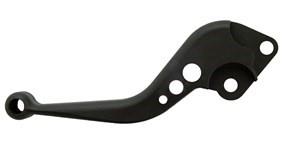Did you know that aluminum oxide, the protective layer formed by anodising aluminium, is almost as hard as a diamond making it extremely abrasion resistant? It also offers excellent resistance against corrosion.
If you need to protect your aluminium part from a harsh working environment or even just add a decorative finish, then anodising could well be the answer. With Protolabs now offering anodising as a service, we can help you make sure that you get it right by answering all of your questions.
What is anodising?
Anodising is an electrolytic passivation process used to increase the thickness of the oxide layer on the surface of metal parts. It is called anodising because the part being treated forms the anode of an electrical circuit. At Protolabs we use sulphuric acid anodising.
Where do I get it done?
We think that it makes sense that you look no further than the manufacturer that you have outsourced your on-demand production with. We are in the best position to guide you through the entire process from initial part design through to the final anodising step. There is no need to source an extra supplier and no need to raise another purchase order.
What type of anodising do I need?
Ask yourself why you want the aluminium part anodised, is it for protection or for decoration? This will affect the thickness of the anodised coating that you need, the thicker the coat the more protection it offers.
For decorative finishes you will need a minimum thickness of 5µm, up to 25µm. This should be completed to ISO 7599. We would recommend a thickness range between 15 to 25µm for parts that are to be dyed.
If you need to further protect the part against corrosion and abrasion, then you will need hard anodising finished to ISO 10074. This produces a minimum thickness of 25µm up to 50µm.

Durable and decorative surface treatment for aluminium parts.
Will all of the surface be anodised?
Anodisation will cover 99.9% of the surface. What about the other 0.1%? Well the process needs at least one electrically conductive point in the component at all times, so that point will get no coverage.
This means that you must think about how the component will be mounted or jigged. Jigging serves two purposes, it maintains electrical contact and also ensures that the part does not fall off during the process.
In many cases the conductive or jigging point can be placed on non-critical or decorative surfaces. It is often a threaded hole which gives a good electrical contact. Hard anodising requires much higher voltages, so secure contact is vital and sometimes we may need to tap a threaded bolt. If you work with us, we can decide the best place for this; typically it would be on a hidden face to help hide the contact marks.
Are there other options to anodising?
There are a number of different finishes that are available for an aluminium part. It really comes down to what functionality you require. Chromate conversion coating, for example, provides a protective film to aluminium and gives an excellent primer for paint or improved corrosion resistance as a stand-alone finish. It also has the advantage of retaining the metal’s conductivity.
The advantage of working with us, from start to finished part, is that we can gain a clear understanding of your design needs and the final functionality of the part in operation. This puts us in an excellent position to advise not only on its design, but also on how the finish will protect or affect it in operation.
If you need a tough aluminium part, then anodising is an excellent choice, but as they say on the BBC other options are available. Let us talk you through the different options and what you should consider.